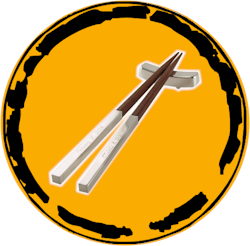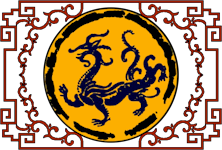
The western concept of 'Chinese Food' differs from country to county. If there is a significant Chinese population represented in a given city, or even section of the city, what is presented as 'Chinese Food' is more closely related to authentic food eaten in China.
The idea of eating 'buffet style' at a Chinese restaurant in the west is an homage to the way Chinese families typically consume food. There are many different dishes made and everyone at the table chooses a portion of each dish to complete their meal. Rice is a staple almost everywhere in China, and is made by the pound during a typical meal in China. As in the west, meals are divided throughout the day. However, because there is only one time zone in China, the entire population eats their dinner meal at right around the same exact time each day. In the US, people in the Eastern time zone might eat dinner between 6 and 7 in the evening, and while people in the Western time zone will eat at the same time on the clock, it has been four hours since the Eastern time zone has eaten dinner. If the concept of the 'dinner meal' in China were applied to the US, people in California would be eating their dinner meal at between 3 and 4 in the afternoon.
Generally, authentic Chinese fare is more spicy and is made mostly of vegetables. It is not at all uncommon for a typical Chinese family (who does not live in a coastal region) to go weeks or even months without having meat in their meals. A family living in a coastal region will scarcely go a day without some type of seafood or fish in their meal. Vegetables are not that different from those found in the west. Bok choy, a kind of cabbage, kai-lan, a kind of broccoli and dao-mieu, a type of spinach, are the most common vegetables found in traditional and authentic Chinese food.
Cuisine can vary widely from rural to urban and from inland to coastal. While many traditions in the north tend to dry and preserve their food through the winter months, several others in the south have access to freshly grown vegetables and grains year round.
Despite the many differences in Chinese cuisine, there are a few common elements that are pervasive in cuisine no matter where in China one might travel. Atop these is rice. Rice has been cultivated and used as a staple in the diet of the Chinese people for at least ten-thousand years. Another common element is the noodle, either made from rice, which is called mei-fun, or wheat, which is called lo-mein. Preparation of food is very uniform throughout China. Every household has a wok, which is a giant iron bowl. It begins its life shiny and silver-colored, but can not cook a proper meal unless it has been seasoned with oils and a black coating appears.
The form of the Chinese meal is usually the same no matter where in China the food is being eaten. There is a variety of central dishes to choose from and each person at the table has a rice bowl, where the food is placed and gathered with some rice and consumed. Everyone eats their food with a pair of sticks called chopsticks, or kuai-zi. It is acceptable to bring the rice bowl to one's lips and push rice into the mouth using chopsticks.
